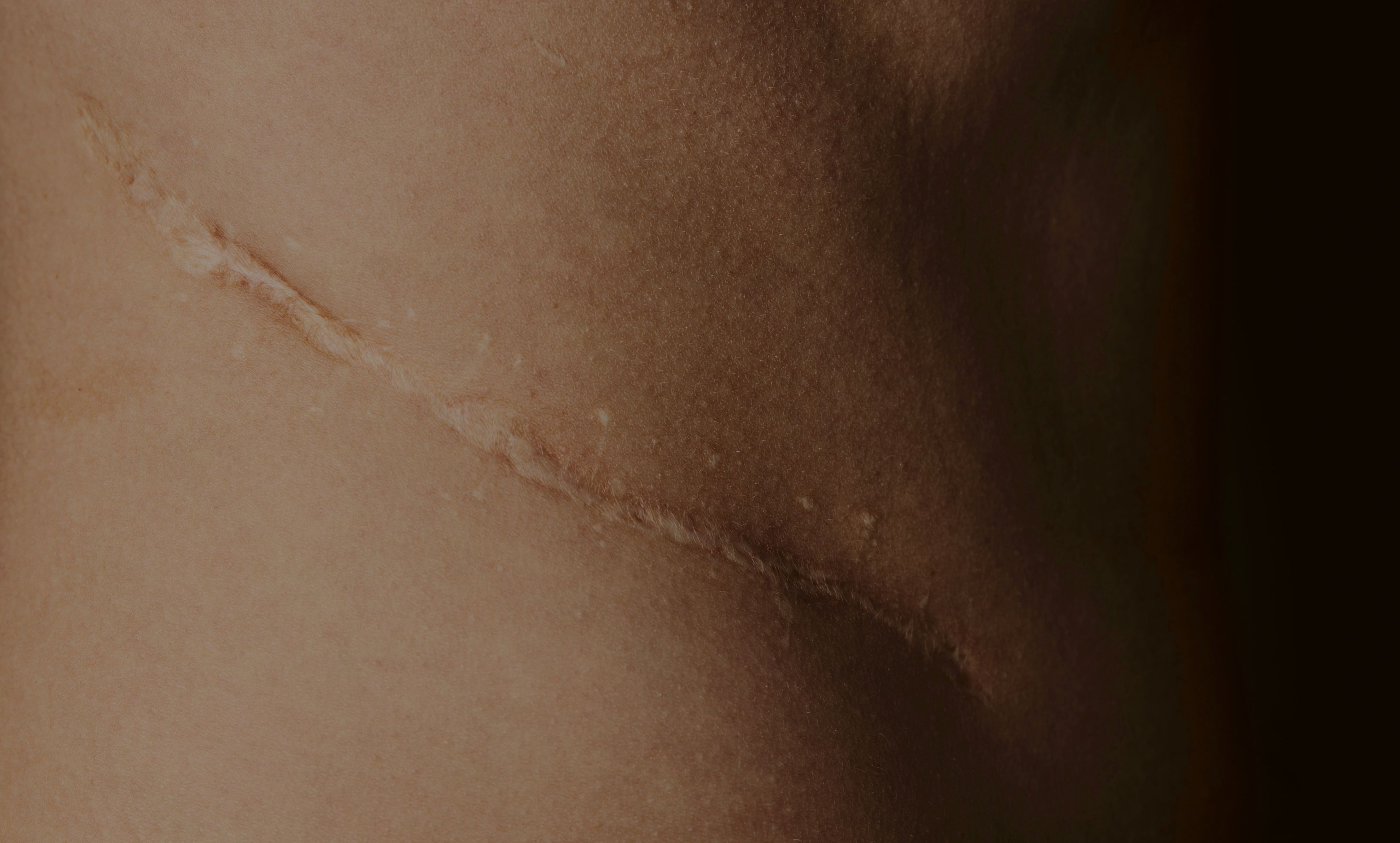
Dr Michael Freeman is an Associate Professor of Dermatology at Bond University, a Fellow of the Australasian College of Dermatologists, a member of the Skin and Cancer Foundation of Queensland and the Director of Dermatology at the Gold Coast Hospital. Here's his take on how to support your skin’s natural repair process and embrace the marks that make you, you.


Every scar, no matter how big or obvious, has a story.
Actor Jason Momoa sports a scar across his left eyebrow after he was glassed in a Hollywood bar in 2008. He received 140 stitches.
Comedian Tina Fey has a thin scar on the left side of her face, under her lower lip. It is the result of an attack by a stranger when she was five years old.
The Japanese see such marks through the lens of wabi-sabi – an ancient philosophy focused on accepting the imperfect and transient nature of life. There is no direct Western translation for wabi-sabi, but essentially it is the art of finding beauty in the imperfect, impermanent and incomplete.
It's fair to say that in the Western world, there is a strong obsession with perfection. For those who don't connect with the philosophy of wabi-sabi, the goal is often to make a scar as small and unnoticeable as possible.
We all have scars — some are just more visible than others. Some wear their scars proudly, including after body-changing surgery, while others may prefer to reduce their appearance.
One of the key factors in reducing the colour and size of our scar is moisture. The majority of scars form within the first few months of an injury, so if we want to minimise the damage, it's important to support healing from the very beginning.
The good news is it is possible to intervene during the earliest healing stage to promote tissue repair and minimise any pathological conditions.
Immediate wound care
If you are injured, wound cleaning must be carried out within two hours of the accident. After a fall on the ground, for example, it is important to remove all dirt from the wound, even if this means rubbing it with soap and water.
If microbes enter the skin, the quality of healing (and the scar) can be adversely altered.
In the event of an injury, our body naturally produces a substance with antiseptic properties, hydrogen peroxide (H₂O₂). This can be supplemented with povidone-iodine (sold as Betadine) which also kills spores. The natural hydrogen peroxide is followed by a multiplication of blood vessel cells, epidermal cells and fibroblasts (collagen-producing cells which serve as a support for other tissues).
Collagen: the foundation of skin healing
Collagen plays a key role in the appearance of our scars. This protein is the most abundant in our body and contributes significantly to the strength of the skin and can affect the scar for at least six months afterwards. Once the redness is gone the scars tend to be white and a bit shiny.
Keeping wounds moist for better healing
For clean, uninfected wounds, the application of a hydrogel (a polymer that retains moisture and does not dissolve) can speed up healing. When the wound is kept moist and clean, the proliferation of surface skin cells is promoted and heals with a better appearance.
Wound gels that contain antiseptics and preservatives should be avoided, not only in case of allergy but also because antiseptics can actually slow down healing.
Managing red, itchy scars
Scars that appear red (and therefore very perfused by blood vessels) and itchy are likely to grow and therefore leave larger marks. In such a situation, keeping the scar covered to improve hydration can make a big difference.
For this reason it is advisable to cover the scar with a silicone patch or hydrogel for as many hours as possible. Dermatologists have access to pulsed dye lasers which can treat the redness and improve the appearance of scars in the longer term.

Keeping wounds moist for better healing
For clean, uninfected wounds, the application of a hydrogel (a polymer that retains moisture and does not dissolve) can speed up healing. When the wound is kept moist and clean, the proliferation of surface skin cells is promoted and heals with a better appearance.
Wound gels that contain antiseptics and preservatives should be avoided, not only in case of allergy but also because antiseptics can actually slow down healing.
Managing red, itchy scars
Scars that appear red (and therefore very perfused by blood vessels) and itchy are likely to grow and therefore leave larger marks. In such a situation, keeping the scar covered to improve hydration can make a big difference.
For this reason it is advisable to cover the scar with a silicone patch or hydrogel for as many hours as possible. Dermatologists have access to pulsed dye lasers which can treat the redness and improve the appearance of scars in the longer term.

Long-term care
Many people also keep their scars moist by using oils such as Vitamin E. It’s more difficult than with a silicone dressing, but it does help to reduce excess scarring, sometimes referred to as ‘over-scarring’.
Finally, it is important to avoid overexposing the scar to sunlight. In fact, scars can become much darker than the rest of the skin, and ultraviolet rays are the main preventable factor in this risk.
So no matter how the injury happened, treating it promptly and wisely can help reduce the chances of a long-lasting scar.
Published on Wednesday, 7 May, 2025.
Original thinking direct to your inbox

Stories from Bond